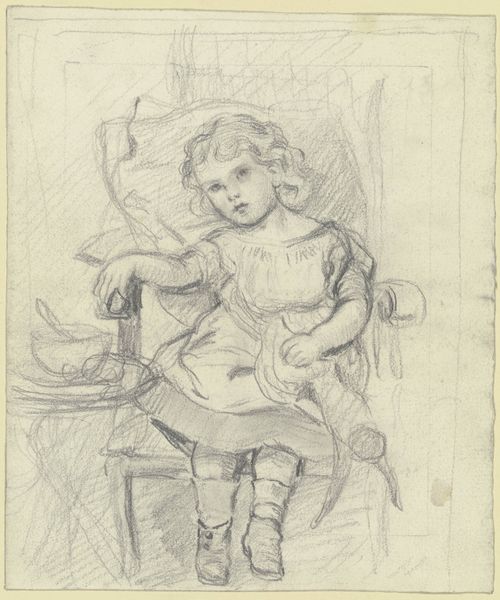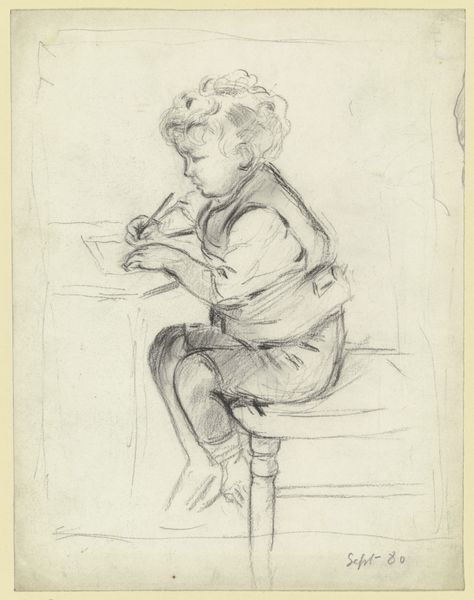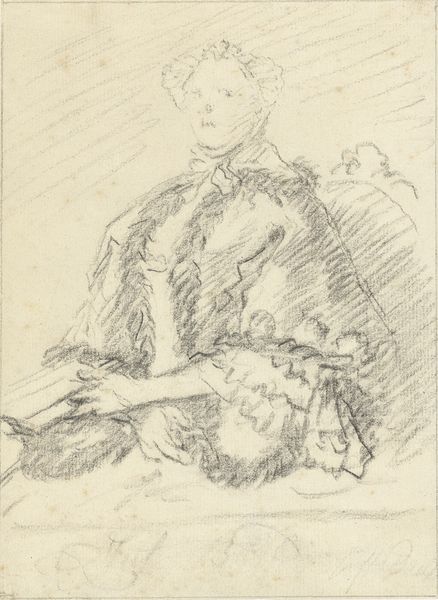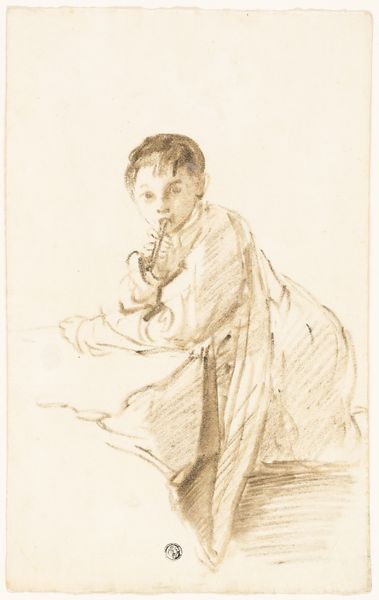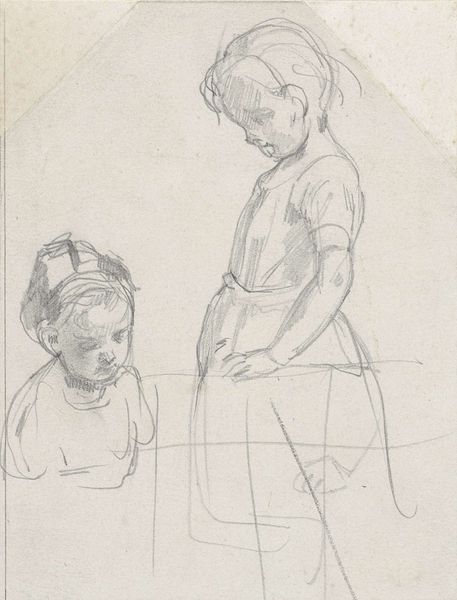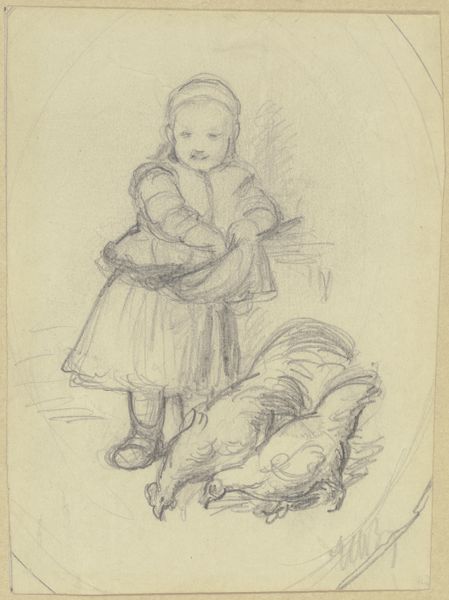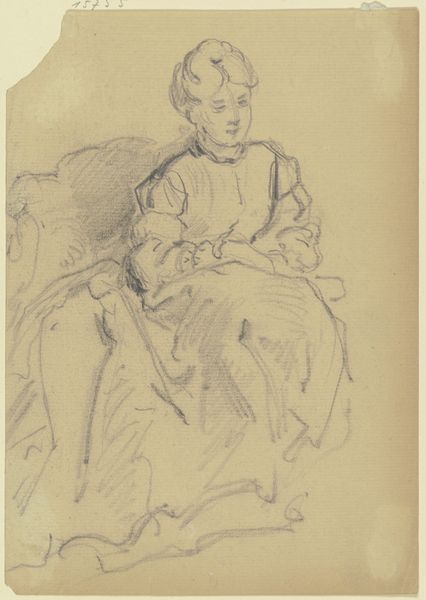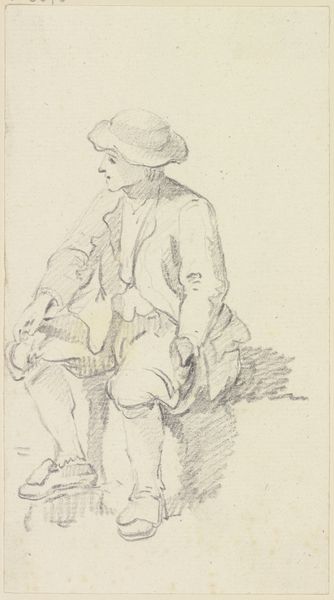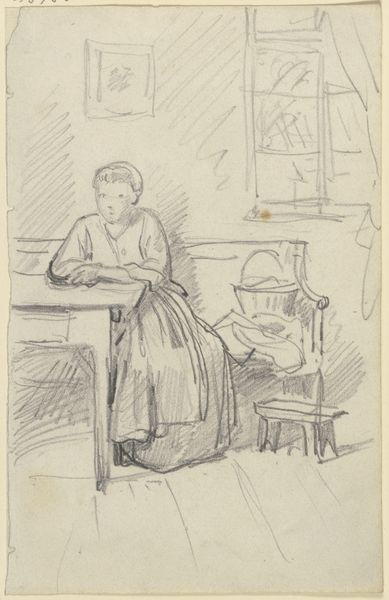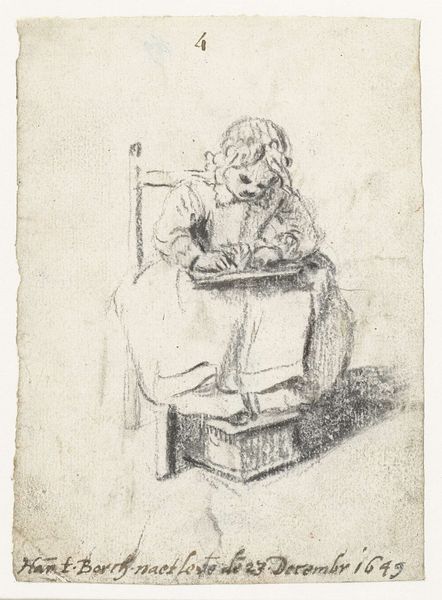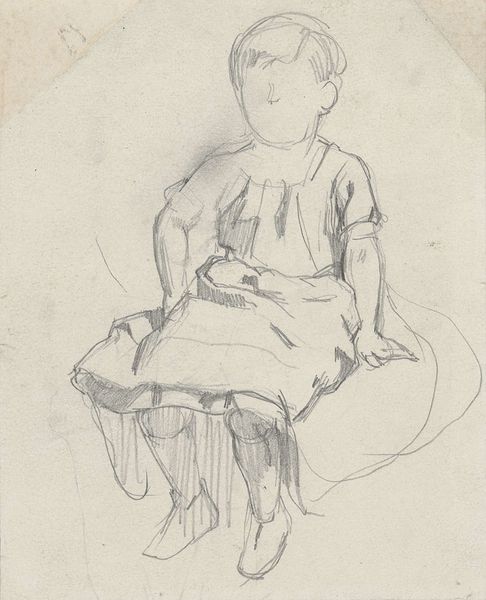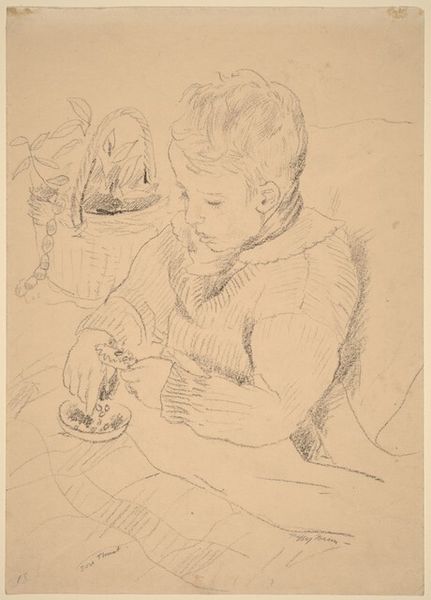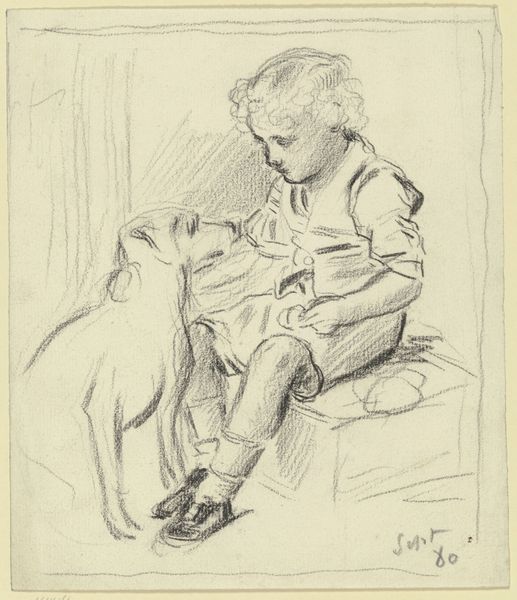
drawing, paper, pencil
#
portrait
#
drawing
#
16_19th-century
#
figuration
#
paper
#
pencil
Copyright: Public Domain
Curator: We’re looking at Philipp Rumpf’s work, “Frau vor der Staffelei sitzend,” a drawing housed here at the Städel Museum. It’s executed in pencil on paper. Editor: The delicacy of the pencil work strikes me first. There’s a softness to the woman's form and the almost sketched-in background. Curator: The fact that we have a woman artist portrayed from, presumably, the artist’s eye is something. Were the tools provided equally to women artists at this period in art history? How can we discuss Rumpf's composition choices by including a narrative for marginalized identities? Editor: The act of painting carries strong symbolic weight. It signifies not only creativity, but the potential to alter reality—a demiurgic act. Even the rough state of the easel hints at transformation and a liminal space between seeing and being. Curator: That reminds me of how the lack of identifying information about her pushes this representation outside of portraiture as such; perhaps her individuality doesn’t even matter as much as the historical moment that enabled her to become an artist. In other words, how do intersectional dynamics impact the accessibility of becoming an artist for women during this timeframe? Editor: It does offer us that universality, that accessibility, in a way. There's an anonymity that invites projection, like a visual mirror held up to female creativity throughout time. And don’t forget the symbolic act of observing and capturing life through the hand—a tradition that spans back to Paleolithic cave paintings. Rumpf evokes something elemental. Curator: These visual cues that might also invite a psychoanalysis of their presence within the history of visual representation itself. Editor: Exactly. Rumpf's economy of line is beautiful and very direct. It distills artistic creation to its barest essence. I wonder, though, if he’s inviting us to contemplate how identity can sometimes be subordinate to one’s life circumstances, since this woman can only participate through sanctioned routes in the public life. Curator: True. So much here prompts critical inquiries into social structures and power dynamics and how that defines an artist's trajectory, isn’t it? Editor: Absolutely. The history embedded in the visual is always more nuanced than any simple narrative can capture.
Comments
No comments
Be the first to comment and join the conversation on the ultimate creative platform.
